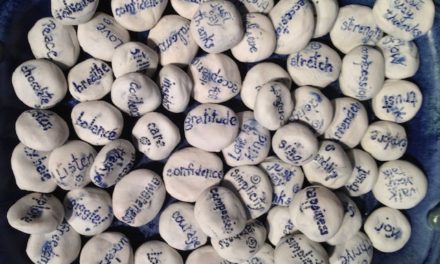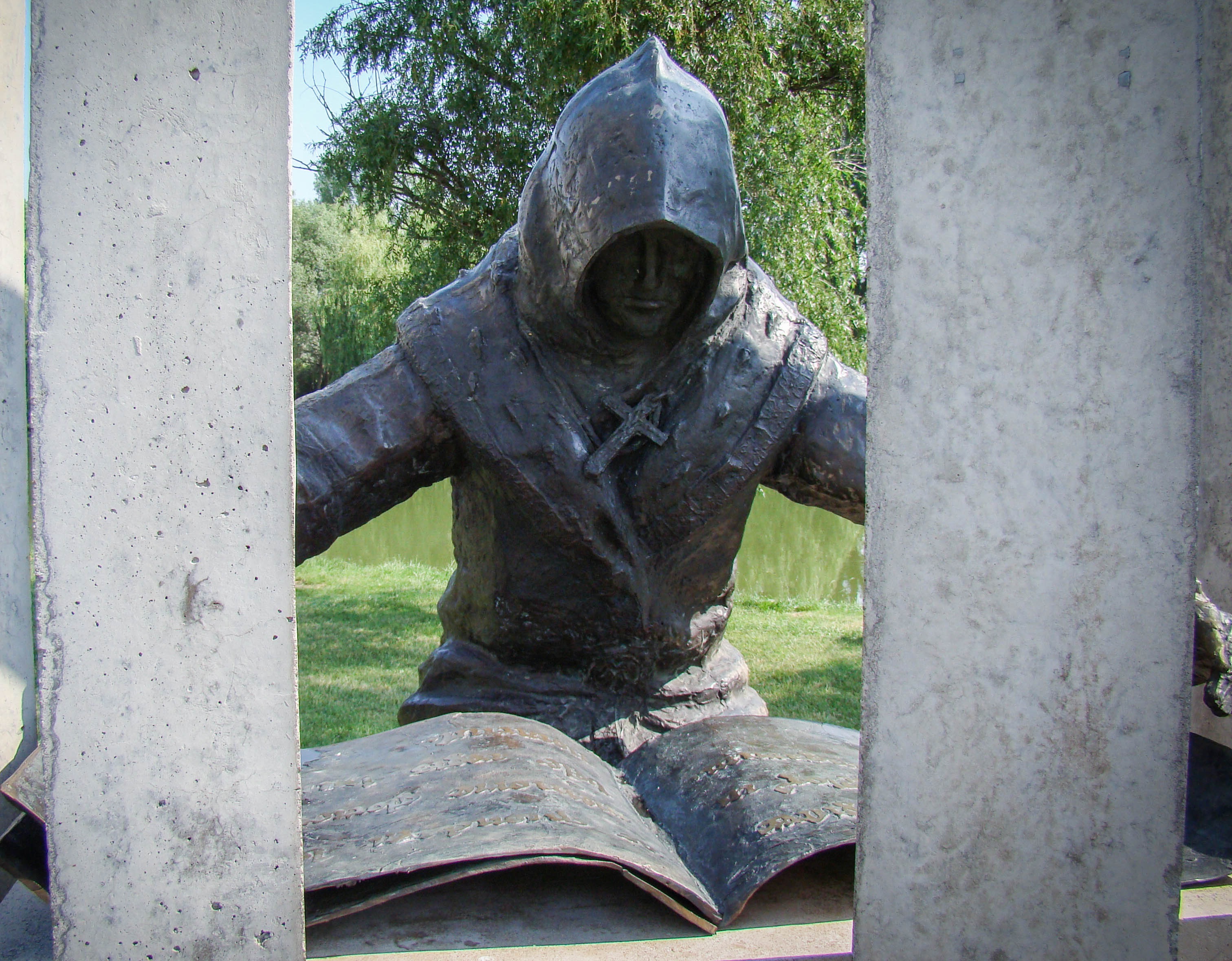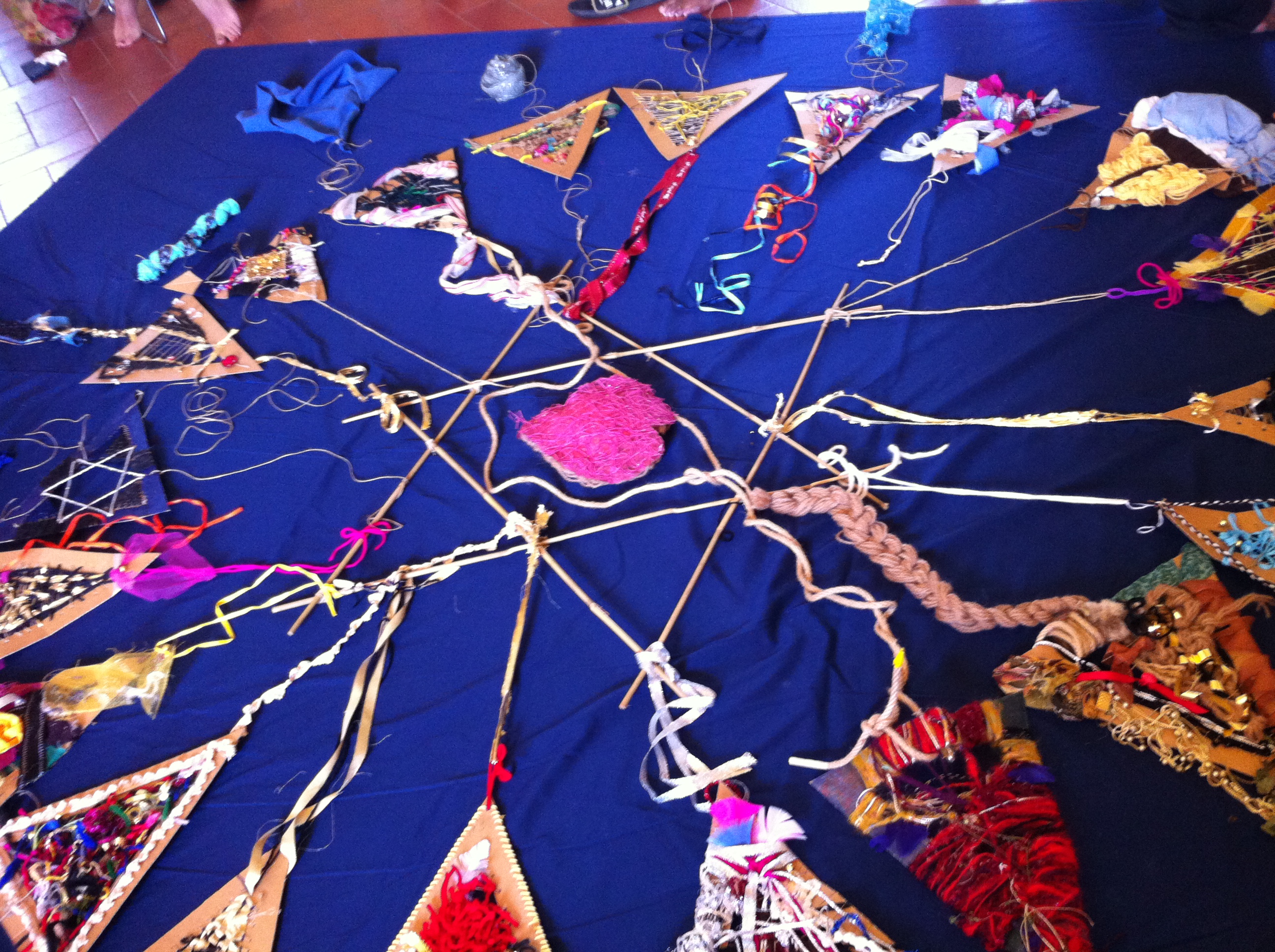Confluence is everywhere we are. Our hearts beating together as we play, talk, sing, create. Over time, over space, we reach a gradually deepening attunement, a leveling, a drawing together, even when it’s so deeply in the background that we are only remotely aware of it, if at all. Let Bernie DeKoven explain.

There are two key factors to the experience of coliberation: that which we call ME, and that which we might as well call WE. When coliberation occurs, we experience ourselves as being in flow with other people who are also in flow.
Confluence is the WE part.
Sometimes, as in a well-played game, we are engaged with others who are also engaged: completely engaged – body, mind, senses – in flow. We are engaged with each other, in each other, to such a degree that we each increase the others’ engagement. The very experience of completeness becomes expanded. We go beyond ourselves. We are WE.
Confluence is an experience that seems to be almost universal in the fun it brings us. It’s a common experience – common not only to us, but to other species. It has a lot of different names: harmony, togetherness, flocking, murmuration (more murmurings at the end of this article.)
Confluence means “flowing together.” It is used to describe where streams flow together to create a larger stream.
We experience something like confluence when we’re just by ourselves, talking to ourselves, reflecting, and all the various voices, awareness, and abilities that we have to engage with ourselves all seem to be in accord, in harmony, balanced in an easy-going, natural familiarity. It’s like what happens when an artist lets the materials she is using have a say in what she is creating. Her art becomes a dialog. And, during that dialog, she becomes immersed, engaged, attuned, until she arrives at something new.
We sometimes experience something like confluence when we are at work, or at play, writing something, drawing something, building something, and the dialog between what we are making and what we are hoping to make seems very relaxed, easy-going, materials and intentions fitting together like dancers improvising to a new music.
But when we dance with someone else, that experience takes on an added dimension. We are, as Martin Buber would say, immersed in a relationship with the Other.
Confluence runs very deep in the core of our being. It is something we share, not only with each other, but with birds, fish, mammals and maybe insects, and who knows, molecules, atoms, even.

OK, so maybe (just maybe) molecules and atoms and insects and animals don’t exactly find, well, joy and comfort in each other. But they find something. They most definitely seem, shall we say, attracted to each other. But because we can’t be sure, let’s, for the sake of agreement, think about confluence as a human experience – a shared human experience.
There are many ways in which we human beings share experience. Some are more fun than others. The most fun seem to involve the deepest sharing, sharing on the most levels: physical, intellectual, emotional, spiritual, social. And within each of those there are levels. From casual to intimate, light-hearted to whole-hearted, wondering to wonder.
It’s everywhere we are. Breathing together, hearts beating together, clapping hands in unison, jumping rope together. And singing together, marching together, fighting together, thinking together – even if we’re thinking against each other, playing a game of chess or scrabble. Or even when we’re not physically together, playing online, playing words with friends, drawing something.
Over time, over space, we reach a gradually deepening attunement, a leveling, a drawing together, even when it’s so deeply in the background that we are only remotely aware of it, if at all, when we’re online, even when we’re in line, waiting together, or we are standing in a pasture, browsing over the next clump of grass, hovering between hunger and satiety, the connection between us comforts us, enlarges us.
Music helps. Rhythms. They synchronize us. Sometimes very deeply. Our bodies. Our awareness. Our breathing. All moving as one.
… and yes, sleeping together, and even more yes, making love… where we reach perhaps the deepest confluence, the most total.
I like to think of confluence, naturally, as a river – in, of course, flow. Well, as a meeting of rivers. And us…there are those of us just touching the rivers’ edge, standing on the banks. And for those of us at the edge, there’s a sense, a sound in the very background of our beings, of harmony, of unheard voices, rivulets of consciousness joining the rhythms of the water. Connected, by the merging rivers, to those of us who have gone deeper to be moved together by the crossing currents until the sheer power of their collective presence washes away all fear, all distinctions, all the things that divide them one from their selves from the other, and they become so deeply immersed in the rivers, and in each other’s presence, that it seems nothing is left of them but their laughter, and the whole river is set alight, and even the people on the shores seem to sparkle.
Unlike the experience of coliberation, there are no fixed boundaries to confluence. You find your way to that place where you are in consonance with everyone else, when you are all in flow together, and, inevitably, because the equilibrium is constantly changing, you find that you are not there, not experiencing the same thing. The only warning you get is a sense of becoming increasingly distant – either from the community or from yourself. The problem is, you usually can’t tell which.
Once you experience confluence, you are as completely there as you can be, at one with yourself, at one with the community, at one with the game, making magic.
To achieve confluence, you need to be freed from the constraints of ego and identity, and to be freeing others from being judged by anything other than their performance in the game. Once this is achieved, you are free to experience confluence. To maintain that connection, because people are constantly changing, everyone needs to be responsive, to be playful. That is why you play together.
Say you’re at a party.
Everyone is having a simply marvelous time. Dancing, talking, nibbling, chatting, laughing, being ever so amusing and amused, simply loving each other and themselves.
You, on the other hand, are feeling out of it. They’re all so noisy, so self-involved, so insensitive to, well, you. You are not yourself. And the longer you stay, the less yourself you seem to be.
Then, sometime later, there’s this other party. You’ve napped, composed one of your best poems, had a remarkably full-emptying bathroom experience, bathed, eaten a light but filling meal, and dressed, if you must say so yourself, impeccably. In sum, you are remarkably together. You open the door, and people are just milling around, not really talking to each other. Some are carrying around plates of food, not eating. Others are standing by the bar, drinking, seriously. There’s no music. No games. Nothing remotely fun or engaging.
When all along what you were really hoping, as was everyone else, was that you’d all feel like this:

Confluence is a connection (one of many) between a community and another entity: another community, or, in this case, you. When you and the community are in confluence, you are in flow together.
There are many different arts and organizations that are devoted to making confluence more available to us. For example, there’s the theater where we find rows of theater-style seats facing a theater-style stage surrounded by a theater-style proscenium arch and hidden by a theater-style curtain. By creating a physical separation – an actual boundary between the community (actors, director, technicians, etc.) and individuals outside the community (audience) – by appointing other individuals (the director, conductor, announcer) to act as liaisons between the community of performers and the community of spectators, by establishing clear conventions to guide the conduct of the audience, physically reinforcing the distinctions; we make it possible for the performers to reach for confluence, and the audience to share in the performers’ and each other’s.
Rules and conventions that maintain a distinction between audience and performers make it possible for people to experience confluence while at varying degrees of personal involvement. The demands on the performer are far more complex than those on the audience member, but so are the expectations. Moments of confluence between the audience and performer are equally powerful for both audience and performer. From time to miraculous time, the performers are in their moment of confluence, the audience is in its moment, and both audience and performers in confluence with each other.

Then there’s the sports arena with its clear and inviolable physical distinctions between spectator and players. Official referees and announcers, official marching bands playing the officially national anthems, halftime performances, special lighting – all making it possible for the spectators not only to spectate, but to participate in, and even to influence the experience shared between the players, between the spectators, and between the spectators and the players.
In less formal situations, like parties, we use food, games, music, dance, dress, we create distinct areas dedicated to particular activities, we rely on the hosts and the friendship between participants – all to establish and maintain a more general, varied, and accessible experience of confluence.
Party games are particularly effective at inviting confluence because their rules and structures are easily distinguishable from less structured experiences. They invite people to act as players (narrowing their range of behaviors to a rule- and role-bound relationship). They provide a specific goal. They create a distinction between players and audience or observers. And they have a special meaning, divorced from other purposes or interpretations, that allows players to act playfully in ways that are unique to games.
Like the audience at a performance, non-players can both participate in and influence the experience of those who are involved, but only to a minimal degree. Non-players are free to observe, encourage players, or to wander off and join other activities where they might participate in or create a more confluential (for them) community.
Dancing, on the other hand, seems to lend itself to less structured, shifting moments of confluence between different partners, while remaining open enough to embrace a partyful of people in a moment of deeply shared spontaneity.
And it’s not all fun and games. Confluence, unlike coliberation, is not necessarily a positive force. We are brought together by love, fear, fun, rage, longing, longing to belong. It plays as central a role in the lure of sport as it does in the effectiveness of the military. In both, it is supported by the wearing of uniforms, the hours of marching and months of shared, strenuous exercise. Protest movements are similarly nourished by moments of confluence, and similarly structured so that these moments are likely to arise (living together, marching together, carrying signs, braving the authorities together). As are riots. In the courtroom, jurors are assigned their own area and confined to a special set of rules. In like manner the judge, lawyers, witnesses, the courtroom observers and even the accused and accuser all have roles and rituals which help establish a sustainably focused, confluential community.
![Source: By Rob Sinclair (In Step Uploaded by geagea) [CC BY-SA 2.0 (http://creativecommons.org/licenses/by-sa/2.0)], via Wikimedia Commons](https://braidedway.org/wp-content/uploads/2017/07/a-3.jpg)
Casinos, coffee shops, courtyards, clubhouses, and cruise ships; restaurants and night clubs; hotels, resorts, arcades, classrooms, playgrounds, cafeterias, assembly halls, recreation centers, retreat centers, kitchens, parks, family rooms, conference rooms, movie theaters, child care centers, fitness centers, museums, hotel lobbies, libraries, shopping centers, public squares, food courts, hospitals and fire stations; a culture rests on institutions that foster confluence.
Confluence plays an equally central role in family and marital relationships, and is also supported by very clearly defined rituals and occasions. Celebrations, outings, eating together, playing and working together, even lying around in front of the TV together; all make the experiences of confluence more accessible to those participating in the relationship.
Confluence plays a similarly central role in animal life. Ants and bees, herd animals and monkeys, fish and birds are all drawn together by the transcendent joy of confluence, even when they’re only flocking around.
Then there’s education, politics and religion: the rituals, officials, costumes, ceremonies, edifices… Don’t get me started.
The experience of confluence is the glue that binds us to a social setting, the promised reward that keeps us seeking each other out. It is not freedom, it is union. Being involved in something together, feeling something together, experiencing togetherness, we feel safer, stronger, we transcend the limits of self.





